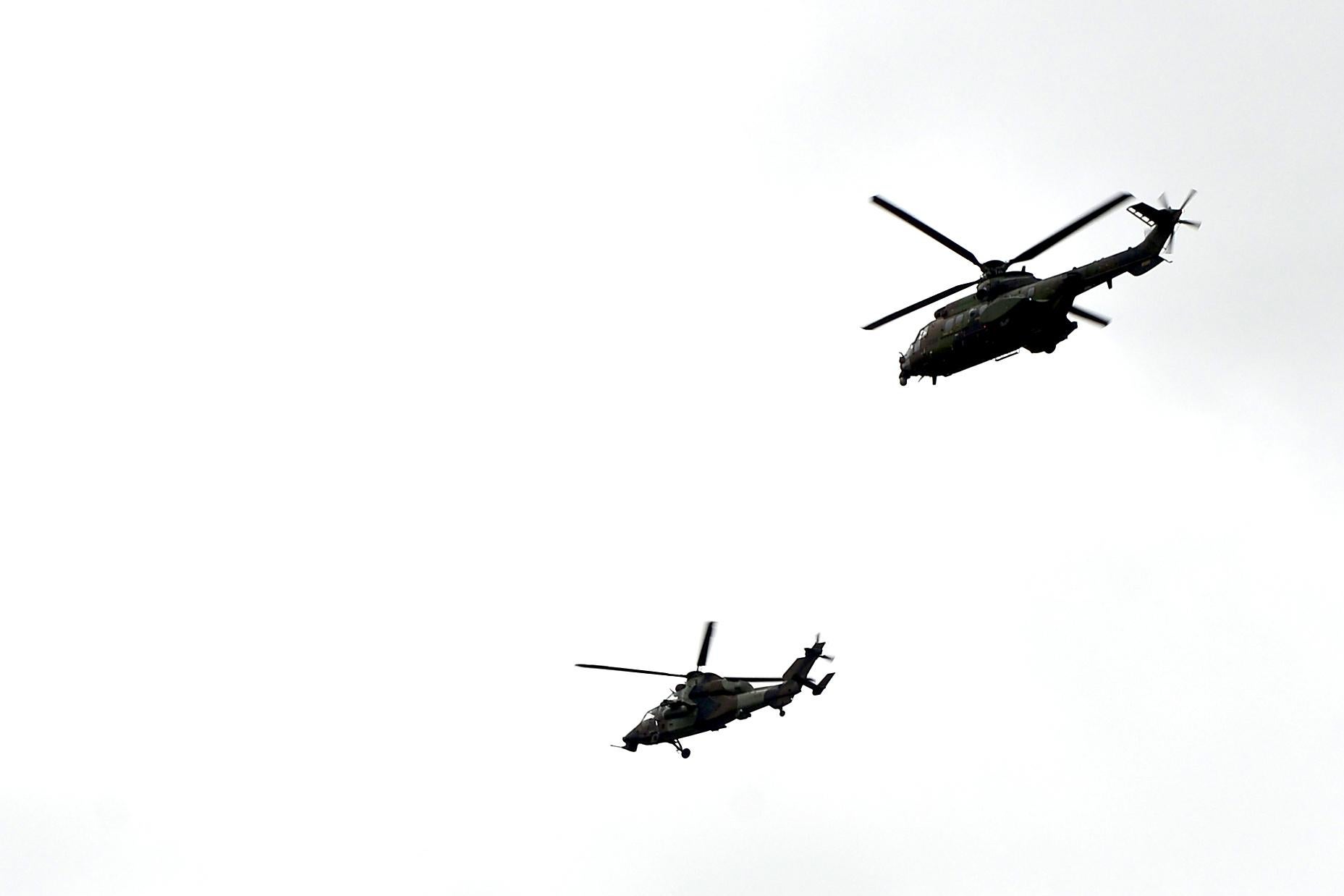The Coast Guard and Navy are searching for nine people after a military helicopter collided with a U.S. Coast Guard plane off the coast of San Diego on Thursday evening. An Army helicopter crashed in western Afghanistan on Monday, the same day that two American helicopters in southern Afghanistan smashed into each other. Why are helicopters always crashing?
Because they’re used in risky operations. Most airplanes operate in a controlled environment of runways, set flight paths, and air traffic controllers. Helicopters, by contrast, are used to reach areas you can’t access by plane. They can land pretty much anywhere, which makes them useful for military operations, search and rescue, medical evacuations, and other dangerous missions. As a result, conditions can be unpredictable. Helicopters are more vulnerable than planes to bad weather. In war zones, helicopters are easier to shoot down than planes. And they fly lower to the ground—a helicopter’s maximum altitude without requiring pressurization is about 12,000 feet—making them more likely to encounter obstacles like buildings or hills that suddenly appear in the fog. (It doesn’t help that in emergency situations, the pilot is in a hurry.) Because of their primary uses, helicopters also tend to take off and land a lot more than planes; the vast majority of accidents in any aircraft occur during takeoffs and landings.
Helicopters also have a lot more moving parts than airplanes—and therefore a lot more things that could potentially malfunction. A helicopter has a main rotor, a tail rotor, a gearbox, and a drive shaft running the length of the aircraft. If any one of those things breaks down, the copter can spin out of control. The fact that these parts are in constant motion also means that the parts wear out more quickly.
Helicopters are trickier to handle than airplanes, too—at least for beginners. You have the cyclic control, a joystick used to move the copter forward and backward; the collective control, which lifts you up and down; the anti-torque pedals, which turn the nose horizontally; and the throttle, which controls the amount of power going from the engine. As a result, the rate of accidents during instructional flights, when pilots are just learning, is twice as high for helicopters as for airplanes: 12.69 accidents per 100,000 hours versus 6.08 accidents per 100,000 hours.
Do helicopters really crash more often than planes? Yes. Helicopters crash at a slightly higher rate than aircraft overall, according to data collected by the National Transportation Safety Board. General aircraft—airplanes, helicopters, balloons, blimps, and everything else—average 7.28 crashes for every 100,000 hours of flight time. The crash rate for helicopters alone is 9.84 per 100,000 hours. That means helicopters crash about 35 percent more often per hour in the air than your average aircraft. (Of course, not all planes are created equal: Single-engine piston planes are 10 times more likely to crash than jets.) Helicopter crashes, however, are less likely to kill you: The fatality rate in helicopter crashes is 1.3 deaths per 100,000 flight hours versus 1.4 deaths for aircraft in general.
Got a question about today’s news? Ask the Explainer.
Explainer thanks Jim Crouse of Crouse Law Offices, J.A. Donoghue of the Flight Safety Foundation, Mark Fontenot of Bristow Group, J. Heffernan of Helicopter Association International, and Ted Lopatkiewicz of the National Transportation Safety Board.
